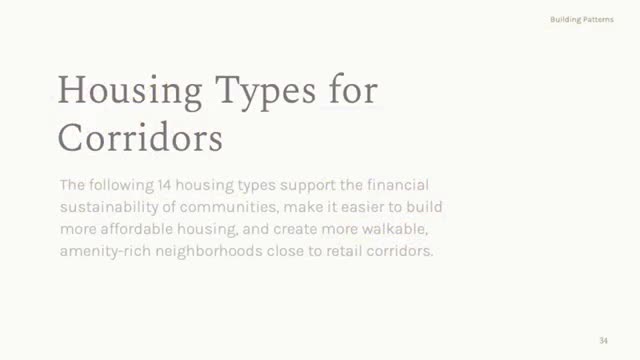Urban Housing Revolution Embraces Smaller Lots for Affordability
September 30, 2024 | East Lansing, Ingham County, Michigan
This article was created by AI summarizing key points discussed. AI makes mistakes, so for full details and context, please refer to the video of the full meeting. Please report any errors so we can fix them. Report an error »

In a recent government meeting, officials discussed innovative housing solutions aimed at addressing community needs while balancing environmental concerns. A key focus was the introduction of a pattern book for housing typologies, which aims to guide communities in coding for diverse housing types, particularly smaller lot houses.
The discussion highlighted the potential benefits of smaller lot sizes, suggesting that many communities currently require excessive land per home. For instance, examples from Grand Rapids illustrated how smaller homes on lots ranging from 1,500 to 3,100 square feet can effectively meet the needs of residents who prefer less yard space. The analysis showed that while homes on smaller lots may have lower purchase prices—averaging $100,000 less than their larger-lot counterparts—the overall value remains comparable, as the homes are maintained to the same standards.
Concerns were raised about the impact of increased density on green spaces and local ecosystems. One official acknowledged the necessity of addressing these environmental implications, particularly in light of climate change and urban flooding issues. They emphasized the importance of planning for stormwater management when developing new housing, suggesting that builders should implement on-site water storage solutions to mitigate flooding risks.
The meeting also touched on the disconnect between developer proposals and community needs, with officials noting a mismatch in current housing developments and the actual demands of residents, particularly in areas with significant student populations. This highlights the ongoing challenge of aligning housing strategies with the diverse needs of communities while ensuring sustainable development practices.
Overall, the discussions underscored a commitment to finding balanced solutions that promote housing accessibility without compromising environmental integrity.
The discussion highlighted the potential benefits of smaller lot sizes, suggesting that many communities currently require excessive land per home. For instance, examples from Grand Rapids illustrated how smaller homes on lots ranging from 1,500 to 3,100 square feet can effectively meet the needs of residents who prefer less yard space. The analysis showed that while homes on smaller lots may have lower purchase prices—averaging $100,000 less than their larger-lot counterparts—the overall value remains comparable, as the homes are maintained to the same standards.
Concerns were raised about the impact of increased density on green spaces and local ecosystems. One official acknowledged the necessity of addressing these environmental implications, particularly in light of climate change and urban flooding issues. They emphasized the importance of planning for stormwater management when developing new housing, suggesting that builders should implement on-site water storage solutions to mitigate flooding risks.
The meeting also touched on the disconnect between developer proposals and community needs, with officials noting a mismatch in current housing developments and the actual demands of residents, particularly in areas with significant student populations. This highlights the ongoing challenge of aligning housing strategies with the diverse needs of communities while ensuring sustainable development practices.
Overall, the discussions underscored a commitment to finding balanced solutions that promote housing accessibility without compromising environmental integrity.
View full meeting
This article is based on a recent meeting—watch the full video and explore the complete transcript for deeper insights into the discussion.
View full meeting
